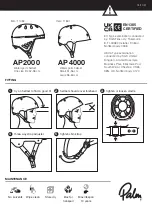
HCT User Guide
page 24
Copyright © 2001 HutchColor, LLC
User_Guide_43.docx 2/10/19
Initial camera setup
Most digital cameras provide some means of altering the camera’s reproduction curve, exposure
and ‘white balance’ or ‘gray balance’. Changing these settings in live work may limit or negate the
value of a camera profile. For consistent results one ‘fixed’ curve and exposure / white balance
method determined at the time of profiling should be used for all live work.
For the most flexible and valuable captures, use the longest – range curve (lowest contrast) possible
and shoot in 16 bits RAW, or the highest bit mode available. When adjustable, keep saturation and
sharpness at their weakest settings.
A fixed setup may restrict some photographers who like to adjust subject contrast or create special
effects in camera software. With care, the camera curve can be adjusted for live work (see
“Changing the camera for live work”) but remember that a fixed camera curve is no different than
shooting with film. It is generally better to use a fixed curve, adjusting only exposure and balance in
the camera software, and controlling contrast with lighting or in Photoshop.
Camera exposure
Camera exposure is set by adjusting aperture, exposure time, ISO (sensitivity) and/or light intensity.
Try to leave any digital exposure tools – e.g. (+) or (-) buttons in the curve window – at their default
settings and try to avoid using the curve tool to affect exposure.
The ideal goal is to adjust exposure until the brightest white in the scene, or a dummy white patch
(e.g. a square of bright white card) reaches a level determined when the profile was built – typically
between 245 and 250 in all three colors.
When possible, always shoot with the lowest ISO setting to reduce noise.
White (or gray) balance
To ensure repeatable performance of a profiled camera, white-balance the camera whenever
lighting, filtration or the lens is changed. The exception is when a filter is used for a special effect.
The method of balancing depends on the camera software. Typically a piece of neutral white or gray
card is used. You can cut your own cards out of a large sheet of illustration board, or buy pre-made
cards designed expressly for digital camera work.
Some software can balance on the same white card used to set exposure. This is only advised if the
software performs the balancing act on the hi-bit ‘linear’ data, in which case white is the best
indicator of color balance. Check with your manufacturer.
Note that due to metamerism failure or UV or IR reflectance, the camera profiling target may take on
a slight color cast (compared to the standard gray card you will use for balancing production shots)
which will permanently add the opposite cast to the profile. If there is no error between the target
material and the standard gray card, use the gray card to balance the profiling exposure. If the target
takes on a color cast, balance on a neutral patch of the target ONLY FOR THE PROFILE
EXPOSURE but use the standard gray card during production work.
Camera profiling curve
One of the advantages of digital photography is the ability to create your own camera ‘curve’. This is
like designing your own film emulsion. But once a profile is created, whatever curve was active at the
time the target was captured is effectively ‘cancelled’ by the profile – at least with most profiling
software. So the best curve for camera profiling may NOT necessarily be the curve you would
expect.















































